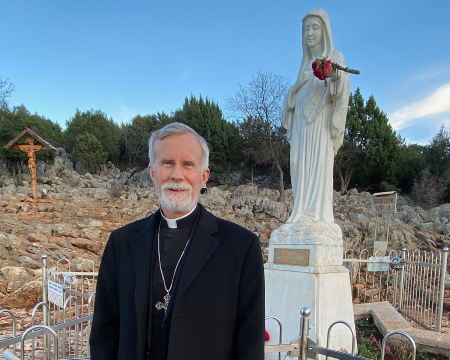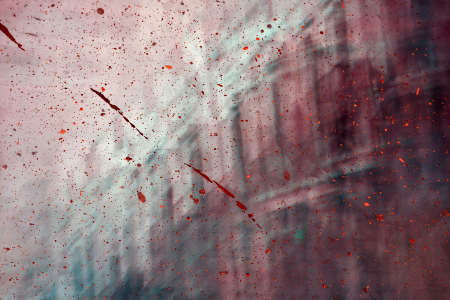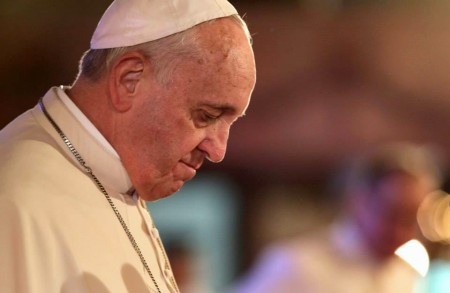Piro Indians
FREE Catholic Classes
A tribe of considerable importance, ranging by water for a distance of three hundred miles along the upper Ucayali (Tambo) River, and its affluents, the Apurimac and Urubamba, Department of Loretto, in northeastern Peru. Their chief center in the last century was the mission town of Santa Rosa de los Piros, at the confluence of the Tambo and Urubamba (Santa Ana). To the Quicha-speaking tribes of Peru they are known as Chantaquiro, nearly equivalent to "Black Teeth", from their former custom of staining their teeth and gums with a black dye from the chonta or black-wood palm ( peperonia tinctorioides ). They are also known as Simiriches. They belong to the great Arawakan linguistic stock, to which along belong the warlike Campa of the extreme upper Ucayali and the celebrated Moxos of Bolivia, whose main territory was about the lower Orinoco, and in the West Indies. The Piro excel all tribes of the Ucayali both in its strength and vitality, a fact which may be due to the more moderate temperature and superior healthfulness of their country. As contrasted with their neighbours they are notably jovial and versatile, but aggressively talkative, inclined to bullying, and not always dependable. They are of quick intelligence and have the Indian gift for languages, many of them speaking Quicha, Spanish, and sometimes Portuguese, in addition to their own. Like most of the tribes of the region they are semi-agricultural, depending chiefly upon the plantain or banana, and the maguey ( manhiot ), which produce abundantly almost without care. The preparation from these of the intoxicating masato or chicha , to which they are given to excess, forms the principal occupation of the women in all of the tribes of the Ucayali. They also make use of fish and the oil from turtle eggs. Their houses are light, open structures, thatched with palm leaves, with sleeping hammocks, hand-made earthen pots, and the wooden masato trough for furniture. Their dress is a short of shirt for the men, and a short skirt for the women, both of their own weaving from native cotton and died black. They wear silver nose pendants and paint their faces black. The men are splendid and daring boatmen, in which capacity their services are in constant requisition. In their primitive condition the Piro used the bow, lance, and blowgun with poisoned arrows. They were polygamous and made constant raids upon the weaker tribes for the purpose of carrying off women. They buried their dead, without personal belongings, in canoes in the earthen floor of the house. Their principal divinities were a benevolent creative spirit or hero-god called Huyacali, and an evil spirit, Saminchi, whom they greatly feared. They had few dances or other ceremonies.
 Hi readers, it seems you use Catholic Online a lot; that's great! It's a little awkward to ask, but we need your help. If you have already donated, we sincerely thank you. We're not salespeople, but we depend on donations averaging $14.76 and fewer than 1% of readers give. If you donate just $5.00, the price of your coffee, Catholic Online School could keep thriving. Thank you. Help Now >
Hi readers, it seems you use Catholic Online a lot; that's great! It's a little awkward to ask, but we need your help. If you have already donated, we sincerely thank you. We're not salespeople, but we depend on donations averaging $14.76 and fewer than 1% of readers give. If you donate just $5.00, the price of your coffee, Catholic Online School could keep thriving. Thank you. Help Now >
The first missions on the upper Ucayali were undertaken in 1673 under Father Biedma, of the Franciscan Convent of the Twelve Apostles in Peru, who had already been at work in the Huallaga since 1631. In 1674 the warlike Campa attacked and destroyed the mission established among them and massacred four missionaries together with an Indian neophyte. In 1687 Father Biedma himself was killed by the Piro. Others were murdered or sank under the climate, until in 1694, when Frs. Valero, Huerta, and Zavala were killed, the Ucayali mission was abandoned. They were renewed after some years with a fair degree of success, but in 1742 were again wiped out and all the missionaries brutally butchered in a terrible rising headed by the Campa, under the leadership of an apostate Indian, Juan Santos, who took the name of Atahualpa, claiming to be a descendant of the last of the Incas. In 1747 Fr. Manuel Albaran, descending the Apurimac, was killed by the Piro. In 1767 another general rising resulted in the death of all but one of the sixteen missionaries of the Franciscan College of Ocopa, Peru, which had taken over the work in 1754. In 1790 the Franciscans again had eighteen missions in operation on the upper Ucayali and Huallaga region, with a total population of 3494 souls. In 1794 an attempt to gather the Piro into a mission was defeated by an epidemic, which caused them to scatter into the forests. In 1799 (or 1803 — Raimond) the attempt was successfully carried out by Father Pedro Garcia at the mission of Nuestra Señora del Pilar de Bepuano. In 1815 the principal and last mission for the tribe was established by Father Manuel Plaza under the name Santa Rosa de Lima de los Piros. After the revolution, which made Peru a separate government, the missions were neglected, most of the missionaries were withdrawn, the neophytes sought employment at the river ports or in the rubber forests, or rejoined their wild kindred, and in 1835, only one mission station, Sarayuca, remained upon the Ucayali. The Piro, however, still rank among the important tribes, although, on account of their wandering habit, their true number is unknown. Hervas gives the Piro language three dialects, and states that Fr. Enrique Richter (c. 1685) prepared a vocabulary and catechism in it and in several other languages. Castelnau and Marcoy also give vocabularies.
We ask you, humbly: don't scroll away.
Hi readers, it seems you use Catholic Online a lot; that's great! It's a little awkward to ask, but we need your help. If you have already donated, we sincerely thank you. We're not salespeople, but we depend on donations averaging $14.76 and fewer than 1% of readers give. If you donate just $5.00, the price of your coffee, Catholic Online School could keep thriving. Thank you.Help Now >







 Daily Readings for Saturday, April 20, 2024
Daily Readings for Saturday, April 20, 2024 St. Marian: Saint of the Day for Saturday, April 20, 2024
St. Marian: Saint of the Day for Saturday, April 20, 2024 Children's Prayer For Parents: Prayer of the Day for Saturday, April 20, 2024
Children's Prayer For Parents: Prayer of the Day for Saturday, April 20, 2024

